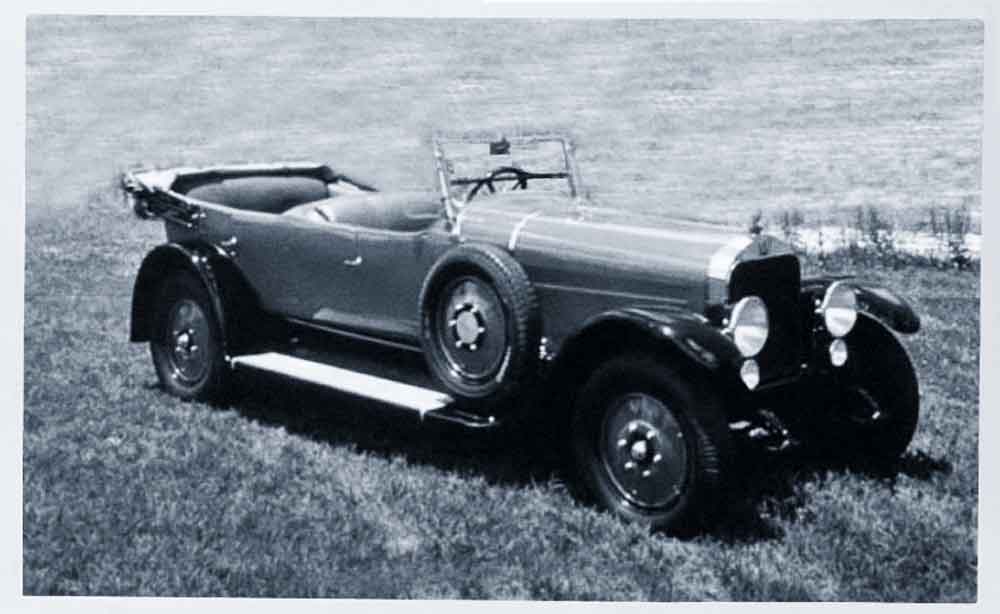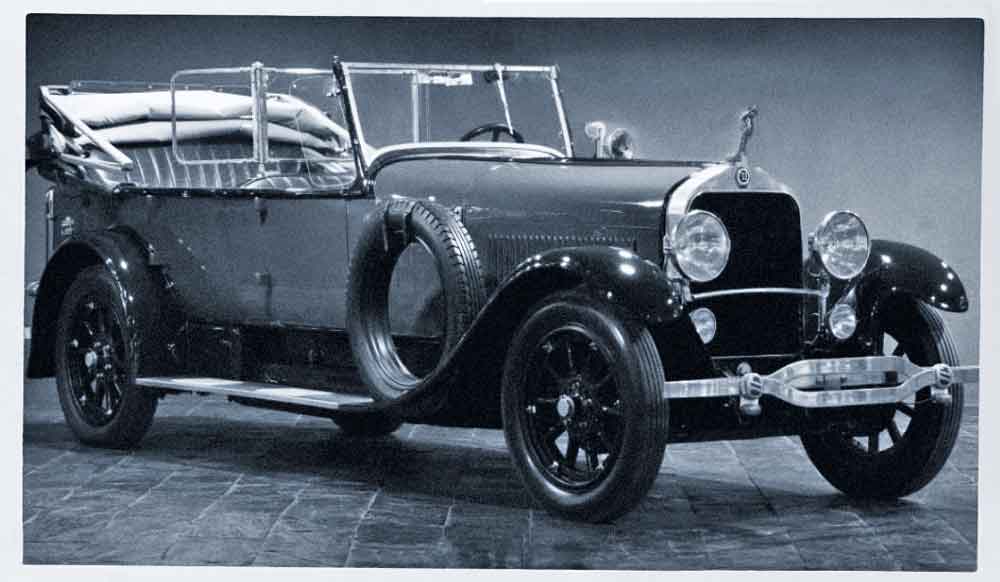


After the 1st World War Isotta-Fraschini change their tactics radically; from then on they would not produce multiple engine and chassis choices, but concentrate on one basic design only; the Tipo 8. As usual this was provided as a rolling chassis only, with the customers free to commission whichever bodies they wished from a selection of coachbuilders.
The Tipo 8 was a huge success for the company, although it is only fair to state that this may be undeserved!
For the first time a production car was powered by a straight in-line 5.9 litre eight cylinder engine which produced 80 brake horsepower, which eventually rose to about 90 brake horsepower. Performance was not fantastic; top speed through the three speed manual gearbox was about 85 mph which was a lot slower than many conventional large cars. However they were not aiming for the boy racer market; they wanted to sell stately carriages to rich Americans who would be driven around by chauffeurs. And there were plenty of them in the early 1920s; America was still a fairly new country but it had huge resources and industry and commerce were expanding rapidly. A lot of Americans became very rich very quickly; and those with money wanted the neighbours to know they had it!
Realistically, much of the success of Italian cars in America at the time was down to fashion; or could we say snob value. Italians had a perhaps well-deserved reputation for producing cars which were good to look at, even if mechanically they were not perfect.
And the Tipo 8 was certainly not perfect. With a heavy body on it many considered it to be underpowered. The driving position was uncomfortable. It took real strength to steer it. It was noisy compared to many of it's contemporaries. It was very expensive. It took a herculean effort to operate the clutch. However lttle of this mattered to buyers. After all they wanted to show off their wealth, and the chauffeur was well paid to drive it anyway! Plus it was huge and it gave the wealthy clients the ability to splash out on bodywork that would really get them noticed. It lasted well and was reliable. Isotta-Fraschini became very popular and even rivalled the mighty Rolls-Royce. In the five years between 1919 and 1924 approximately 400 Tipo 8s were sold.
By 1921 though Oreste Fraschini was dead. The two remaining Fraschinis and Cesare Isotta left the company and new management, with new capital, was coming in.
By 1924 it was time for an upgrade and the Tipo 8A was introduced. The engine size went up to 7.3 litres with a power output of between hundred and 10 and 120 brake horsepower. The Claimed top speed in excess of 93 mph. Larger servo assisted brake drums were fitted. This extra power meant that even bigger and heavier bodies could be fitted which made the marque even more popular, and eventually about 950 of them were sold.
But then came the stock market crash of 1929. The company soldiered on and in 1931 the 8B was launched. Engine upgrades pushed power output up to between 145 and 160 php, the chassis was stiffened further and an optional four-speed gearbox was introduced. It was all too late though. The worldwide economic slump had destroyed their market; there was no longer a huge pool of nuveau-riche Americans employing chauffeurs.
The day of the stately carriage was over. Such luminaries as Rudolph Valentino, Pope Pius XI, Randolph Hearst and several of the crowned heads of Europe had owned Isotta Fraschinis but the company was stuck in a groove of producing luxury cars for which there was no market. Without a change of direction the company was doomed.

Introduction
Innovation
Between the wars
The American market
The aborted Ford deal
Other products
The last chance saloon
Click here to search for for the cheapest UK car insurance!
Home | Privacy | About us | Terms
This website is copyright © 2020 of Mary Flowers of City Gate East, Toll House Hill, Nottingham, Nottinghamshire, NG1 5FS